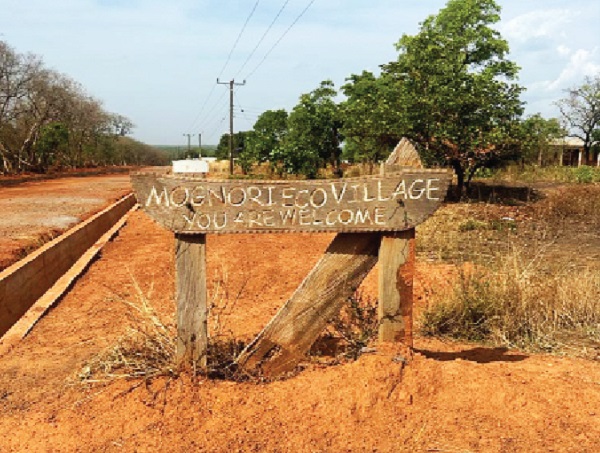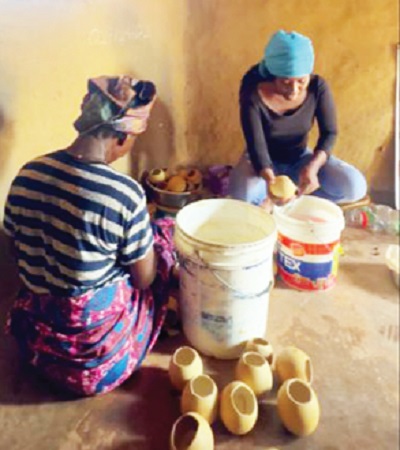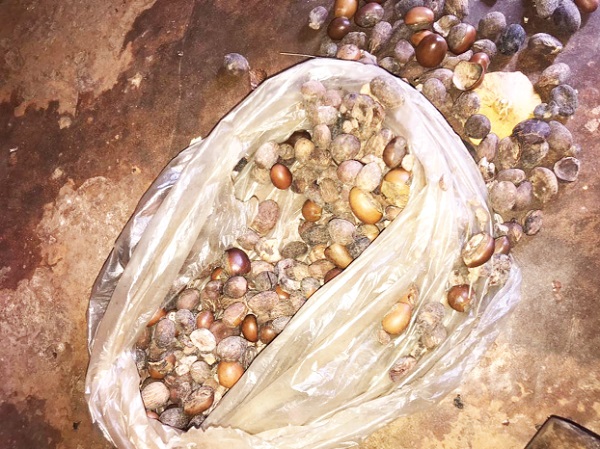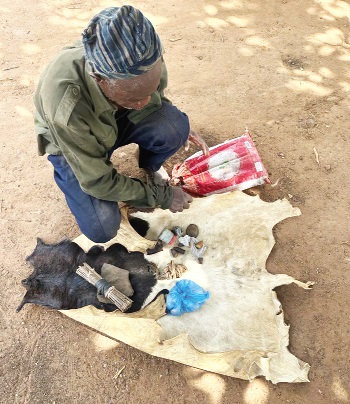
A walk through Mognori Eco Village
Before we set off to the Mognori Eco Village which was about 20 minutes' drive from the Mole National Park, our tour guide, Aziz Pelpuo, gave us a briefing on what to expect.
Advertisement
Unfortunately, because our safari ride at the Mole National Park had been moved forward, we had a short period to tour Mognori.
Aziz said we couldn’t join the river safari but we could meet the shea butter woman, walk through the village to see how they lived and also meet the herbalist.
He explained that the community was a popular tourist stop in the Savannah Region where residents gave visitors the opportunity to learn how they lived.
Through such visits, they are able to generate some revenue that supports their livelihood.
On arrival, we were met by a local tour guide, Latif Sumba, who led the walking tour.

The village is a popular tourist destination in the Savannah
Latif knew his stuff and it was evident the village folks were used to receiving guests in their homes.
Our first stop was the home of a local shea butter producer, Memuna Pentua, who has been in the business for decades. In her small room on the typical savannah architecture compound, she started demonstrating how she derived butter from raw shea.
Memuna doesn’t speak English but Latif explains the processes to The Mirror team and translates the answers she gives to our questions.
Due to time constraints, she was unable to take us through a practical process but in her room was a chart with pictures of how the raw shea was processed till it turned into butter.
She also had a small heap of dried shea nuts in her room which she used to demonstrate to her guests how to crack the fruit out of the nut.
Memuna allowed us to take turns to crack the nuts and also helped us to identify the differences between good and bad nuts.

Our reporter, Ms Gloria Apprey tries her hands on shea butter packaging
Latif further explained that the women were particular on the type of nuts they selected for the butter as it determined the quality and colour.
Simply, bad and dark nuts produced dark coloured and bitter butter.
We couldn’t leave Memuna’s house without buying her raw and natural shea butter which were uniquely packaged in gourds.
Latif explained that the locals were mindful of how their activities impacted the environment and preferred to use the gourds which were eco-friendly.
Our next stop was another home with a traditional rooftop accessible by a log ladder.
Our local guide explained that was how all houses in the village were built in the past. Currently, aside being used as a popular stop during the village tours, the locals also dried their produce there during the harvest season.
When the weather is hot at night, some families spend the night on the rooftop.
Climbing the log was easy but descending was a problem for one of the writers. It took encouragement and support from all members of the team to help her descend.

To prevent a “Humpty Dumpty” fall, Ms Akese descends the log ladder a step at a time
As we headed to the home of the herbalist, Latif showed us some shea trees, how they fruit and the hut that housed the pigeons in the village.
Pointing to the empty hut, he explained that the pigeons were used for different purposes including healing and other traditional purposes.
“If someone gives you a white pigeon it shows how pleased or grateful the person is.
Being presented with a white pigeon here is an honour,” Latif explained.
At the home of the herbalist, Kojo Anawura, 65, who has practised herbal medicine for 40 years, he pulled out his mat made from cow hide and displayed different herbal medicines on it.

The quality of nuts determines the colour and taste of shea butter produced
Kojo, whose knowledge in traditional medicine was passed down from generations, said he started learning about herbs from his father when he was just five years old.
It was after his father passed away that he became the village herbalist having learnt for years.
He said he knew the efficacy of the drugs as he had seen results in people who consulted his father long before he (Kojo) took over. He said some herbs were first tried on animals before they were applied on humans.
Kojo attends to different health cases and he admitted that some required spiritual practices such as slaughtering a fowl or using incantations on the herbs before treatment.

Kojo Anawura, the herbalist had different herbs for different conditions
Like his father, he is also training his sons to take over from him.
The Mognori village had a lot to offer but we had to head to Mole for our scheduled ride through the park.
The village tour was part of a three-day road trip quest for wildlife in the Mole grasslands of the savannah curated by WangoWango, a lifestyle and concierge focused on curating unique memories through domestic tourism and food.




